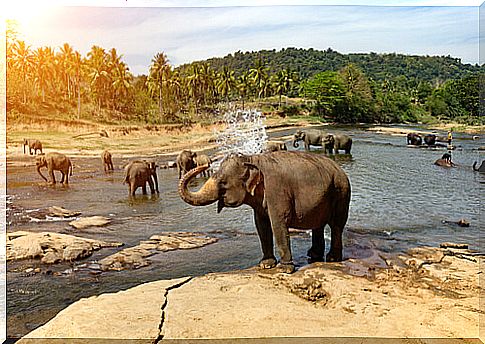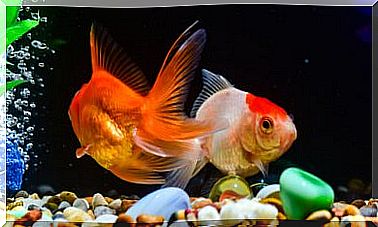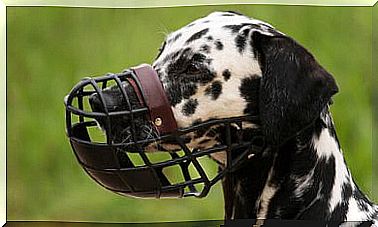Social Structure Of Elephant Herds
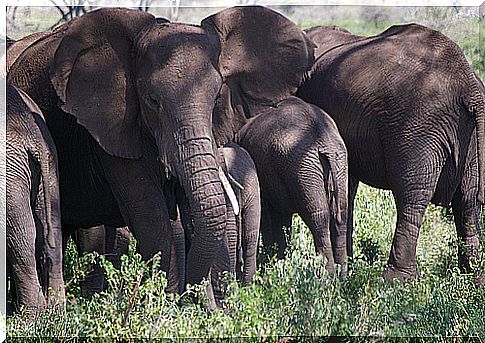
There are animals that we do not know too much perhaps because they do not exist in the country in which we live, as for example what concerns the herds of elephants. To get a little closer to this issue, we are going to examine its social structure in detail. Do you want to go with us?
In fact, examining the social structure of elephants is interesting to say the least, as many researchers are in awe of it. Let’s see why.
Let’s know the social structure of elephant herds
The social structure of elephants is very complex and different from other herds of animals. For example, males live in one flock while females are in a different one.
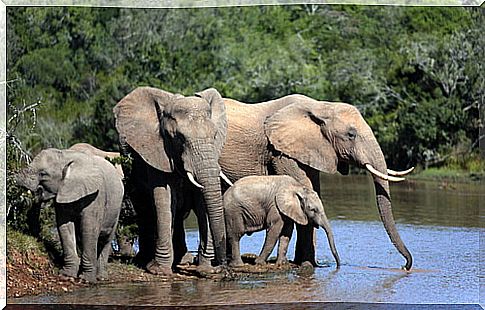
Females remain in the same herd their entire lives, thus creating a close relationship with all their closest relatives. In addition, they are very social with each other and it is not unusual to see them play with each other or with other members of the family.
For example, we can see them squirting water on each other, although there are researchers who argue that they do it to relieve themselves from the heat. However, they seem to do it as if it were a game, so you could say that elephants are the joy of the herd.
Females are not only social with each other, but also with others outside of their herd, including that of males. When a female arrives in the male herd she is well received and can stay there for a while without problem.
It could happen that a member of the pack wanted to venture out on their own and leave their group. This won’t be a problem if he ever comes back; Elephants have an incredible memory that will allow them to remember who were members of their herd and who were not.
And what about males in elephant herds?
Males are very different from females, as they are not so social and like to live in isolation. In fact, they are known to form herds of singles; They usually only go out and socialize when they want a mate, and once they do, they go back to their pack. The older ones usually go around the edges while the young ones are in the center as a symbol of protection.
Elephants will be able to leave the herd for a couple of days and then return. Each time they do so, the time will increase until when they reach approximately 14 years of age they no longer return to the herd.
One of the reasons this happens is because pack leadership is a constant struggle all the time. Therefore, those who do not succeed prefer to venture on their own.
Elephants curiosities
There are many other curiosities that surround elephants and that attract our attention. For instance:
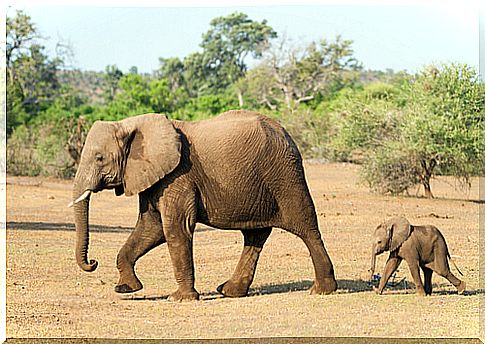
- His emotions. Elephants can cry the same way we do, especially when a baby is born or a member of the herd dies. They have feelings similar to ours, which they demonstrate with pain and tears.
- Help for the young. When a baby elephant is born, all the attention of the herd revolves around him. If for some reason the mother dies, all members of the herd will see to it that the baby survives.
- They love to play. Although they seem serious, especially the males, they are not it all the time. They are very playful animals that like to splash or splash. Of course, if there is danger in the herd or food is scarce, their character changes.
- His intelligence. The saying “you have an elephant memory” is totally true. Their memory and their intelligence have always been something highly studied by researchers and scientists, as it is an intriguing matter yet to be discovered. Their brains are said to weigh around six kilos and they can identify themselves in a mirror. Amazing, right?
We hope that with this information that we have given you, you have been able to get a little closer to this fascinating animal, which intrigues many and surprises others.
It might interest you …
Main image source: ActiveSteve
